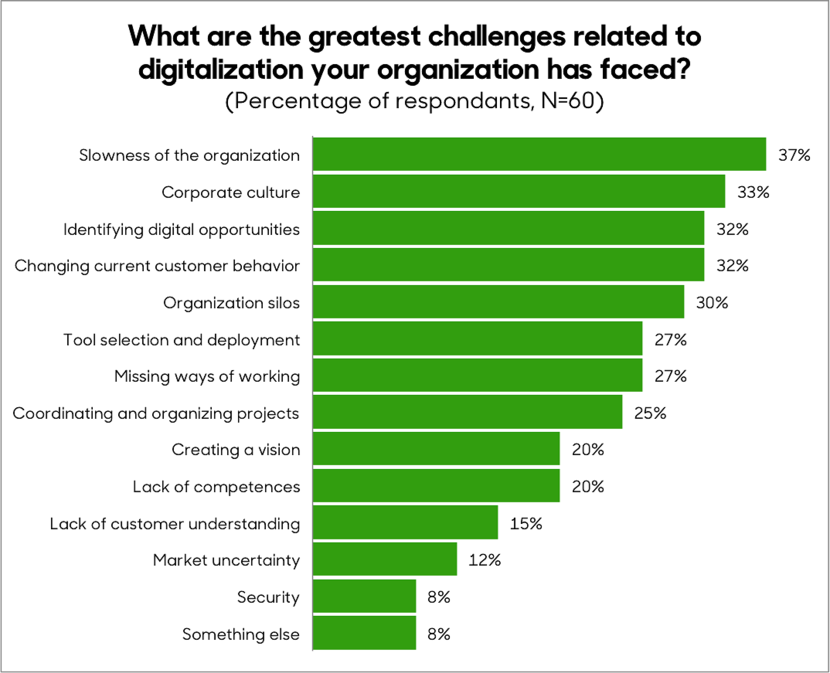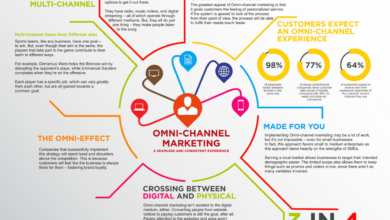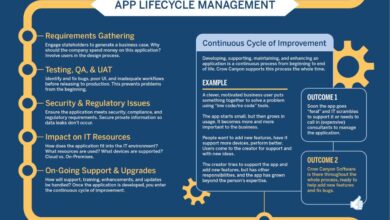
Answering Key Business Questions As You Go Digital
Answering key business questions as you go digital isn’t just about adopting new tech; it’s about fundamentally reshaping how you operate. This journey involves navigating the complexities of a rapidly evolving landscape, leveraging data to make informed decisions, and building a robust digital foundation for sustainable growth. It’s a thrilling, sometimes chaotic, but ultimately rewarding adventure for any business willing to embrace the change.
We’ll explore the challenges and opportunities of digital transformation, from identifying crucial questions to implementing effective strategies. We’ll delve into data-driven decision-making, the power of automation, and the importance of building a secure digital ecosystem. Get ready to discover how you can not only survive but thrive in the digital age.
Identifying Critical Business Questions for Digital Success
Embarking on a digital transformation is a significant undertaking, requiring careful planning and a clear understanding of your business goals. Without a strategic approach, investments in technology can easily become wasted resources. To avoid this pitfall, focusing on the right questions early in the process is paramount. This allows for a more focused and efficient digital transformation, maximizing return on investment and minimizing disruptions.Successfully navigating the complexities of digital transformation hinges on asking—and answering—three critical business questions.
These questions will guide your strategy, inform your decisions, and ultimately determine your success.
Defining Key Performance Indicators (KPIs) for Digital Initiatives
The first crucial question centers around defining how you’ll measure success. What are the specific, measurable, achievable, relevant, and time-bound (SMART) goals you hope to achieve through your digital initiatives? Are you aiming to increase website traffic, boost sales conversions, improve customer satisfaction, or enhance operational efficiency? Without clearly defined KPIs, you’ll lack the metrics to track progress and demonstrate the return on your investment.
Data analysis plays a critical role here. For example, analyzing website analytics can reveal which marketing campaigns are most effective, identifying areas for improvement and optimizing resource allocation. Similarly, analyzing sales data can show the impact of digital marketing efforts on revenue generation. This data-driven approach ensures your digital strategy aligns directly with tangible business outcomes.
Assessing Customer Needs and Preferences in the Digital Landscape
Understanding your customers’ digital behavior is vital for success. How are your customers interacting with your brand online? What are their preferences and expectations in the digital space? Are they primarily engaging with you through social media, your website, or mobile applications? Failing to understand your customers’ digital journey can lead to ineffective strategies and lost opportunities.
Data analysis provides valuable insights into customer behavior. Analyzing website traffic patterns, social media engagement, and customer feedback can reveal preferences, pain points, and opportunities for improvement. For instance, analyzing social media sentiment can identify areas where customers are expressing dissatisfaction, allowing for proactive improvements to products or services.
Optimizing Resource Allocation for Digital Transformation
The third crucial question addresses the efficient allocation of resources. How will you effectively allocate your budget, personnel, and technology to support your digital transformation? Where should you invest your resources to maximize impact and achieve the greatest return? Without a strategic approach to resource allocation, you risk overspending on ineffective initiatives or underinvesting in critical areas.
Data analysis provides a framework for informed decision-making. By analyzing the ROI of different digital initiatives, you can prioritize investments that deliver the greatest impact. For instance, comparing the cost and effectiveness of different marketing channels (e.g., social media vs. email marketing) can inform resource allocation decisions. This data-driven approach ensures that your resources are used strategically to achieve your business objectives.
Potential Roadblocks in Answering Critical Questions
Successfully answering these critical questions requires careful planning and execution. However, several potential roadblocks can hinder the process:
- Lack of access to relevant data: Insufficient data collection or inadequate data infrastructure can limit your ability to analyze customer behavior and measure the effectiveness of your digital initiatives.
- Insufficient data analysis skills: The ability to interpret and utilize data effectively is crucial. A lack of skilled analysts can hinder the process of deriving actionable insights from data.
- Resistance to change within the organization: A lack of buy-in from employees can stifle innovation and hinder the adoption of new technologies and processes.
- Lack of clear business goals: Without well-defined business goals, it’s difficult to establish relevant KPIs and measure the success of digital initiatives.
- Inadequate budget allocation: Insufficient funding can limit your ability to invest in the necessary technologies and personnel to support your digital transformation.
Data-Driven Decision Making in a Digital Environment
The digital age has flooded businesses with unprecedented amounts of data. Successfully navigating this deluge requires a shift from gut feelings to data-driven decision-making. Leveraging analytics allows businesses to understand customer behavior, optimize operations, and ultimately, drive growth and profitability in a way that was simply impossible before the digital revolution. This transition is crucial for sustained competitive advantage in today’s market.Data analytics plays a pivotal role in answering key business questions by providing quantifiable insights into various aspects of a company’s performance.
Instead of relying on assumptions or anecdotal evidence, businesses can use data to understand trends, identify opportunities, and mitigate risks. This allows for more precise forecasting, targeted marketing campaigns, and ultimately, better resource allocation. The ability to analyze data effectively is no longer a luxury; it’s a necessity.
Data Sources Relevant to Digital Business Operations
Understanding the diverse sources of data available is paramount. Digital businesses collect data from numerous channels, each offering unique perspectives. Effectively integrating and analyzing these diverse data streams is key to a comprehensive understanding of the business landscape.
- Website Analytics: Platforms like Google Analytics provide detailed information on website traffic, user behavior, conversion rates, and more. This data helps businesses understand user engagement and optimize website design and content.
- Social Media Analytics: Social media platforms offer insights into brand mentions, customer sentiment, engagement rates, and reach. This data helps businesses understand their brand perception and refine their social media strategies.
- CRM Data: Customer Relationship Management (CRM) systems store valuable data on customer interactions, purchase history, and preferences. This data allows for personalized marketing and improved customer service.
- E-commerce Data: Online stores generate data on sales, inventory, customer demographics, and purchasing patterns. This data is vital for optimizing pricing strategies, inventory management, and targeted marketing campaigns.
- Marketing Automation Data: Marketing automation platforms track email open rates, click-through rates, and other metrics related to email marketing campaigns. This allows businesses to measure the effectiveness of their campaigns and refine their strategies.
Data Analysis Techniques for Business Decision-Making
Various data analysis techniques offer different approaches to extracting meaningful insights. The choice of technique depends on the specific business question and the nature of the data.
- Descriptive Analytics: This technique summarizes historical data to understand past performance. For example, analyzing website traffic over the past year to identify peak seasons.
- Diagnostic Analytics: This technique investigates the reasons behind past performance. For example, analyzing why website bounce rates increased during a specific period.
- Predictive Analytics: This technique uses historical data and statistical modeling to forecast future trends. For example, predicting future sales based on past sales data and seasonality.
- Prescriptive Analytics: This technique uses optimization techniques to recommend actions to improve future outcomes. For example, recommending optimal pricing strategies to maximize revenue.
Essential Metrics for Tracking Digital Transformation Progress
Tracking key performance indicators (KPIs) is crucial for monitoring the success of a digital transformation. These metrics provide quantifiable evidence of progress and help identify areas for improvement.
- Website Traffic: Measures the number of visitors to a website, indicating the reach of online presence.
- Conversion Rate: Measures the percentage of website visitors who complete a desired action (e.g., making a purchase).
- Customer Acquisition Cost (CAC): Measures the cost of acquiring a new customer, helping to assess marketing efficiency.
- Customer Lifetime Value (CLTV): Estimates the total revenue generated by a customer over their relationship with the business.
- Return on Investment (ROI): Measures the profitability of digital initiatives, providing a clear indication of success.
Leveraging Technology to Enhance Operational Efficiency

Going digital isn’t just about having a website; it’s about fundamentally transforming how your business operates. By strategically implementing technology, companies can dramatically improve efficiency, reduce costs, and gain a competitive edge. This involves automating processes, leveraging cloud infrastructure, implementing robust CRM systems, and utilizing the power of AI.
Automation Streamlines Business Processes
Automation is the backbone of efficient digital operations. Repetitive tasks, prone to human error, are easily handled by software, freeing up employees for more strategic work. Consider invoice processing: Manually entering data is time-consuming and error-prone. Automated systems can extract data from invoices, match them with purchase orders, and generate payments, significantly reducing processing time and improving accuracy.
Similarly, automated email responses handle routine customer inquiries, ensuring prompt replies and freeing up customer service representatives to focus on complex issues. The result is a more efficient workflow and happier employees.
Cloud Computing: Scalability and Cost-Effectiveness
Cloud computing offers unparalleled scalability and cost-effectiveness. Instead of investing heavily in on-premise servers and infrastructure, businesses can access computing resources on demand. This is particularly beneficial for startups and rapidly growing companies. As your business expands, you can easily scale your cloud resources up or down, paying only for what you use. This avoids the expense of over-provisioning hardware and the wasted resources associated with underutilized on-premise systems.
Examples include using cloud-based storage for data backups and disaster recovery, ensuring business continuity and minimizing data loss risks. Software-as-a-Service (SaaS) applications further contribute to cost savings by eliminating the need for expensive software licenses and IT maintenance.
Customer Relationship Management (CRM) Systems Enhance Customer Engagement, Answering key business questions as you go digital
A well-implemented CRM system is crucial for improving customer engagement. It centralizes customer data, providing a single source of truth for all interactions. Sales teams gain a 360-degree view of each customer, enabling personalized communication and targeted marketing campaigns. Marketing teams can segment customers based on their behavior and preferences, ensuring that marketing efforts are highly effective.
Customer service teams can access a complete history of customer interactions, enabling faster and more efficient resolution of issues. For example, a CRM system can automatically trigger follow-up emails after a purchase, increasing customer satisfaction and loyalty. Furthermore, it allows for better tracking of sales leads and conversion rates, leading to improved sales performance.
Artificial Intelligence (AI) Improves Decision-Making
AI is rapidly transforming decision-making processes across industries. AI-powered analytics can process vast amounts of data to identify patterns and trends that would be impossible for humans to detect. This allows businesses to make more informed decisions faster. For instance, AI algorithms can predict customer churn, enabling proactive interventions to retain valuable customers. In supply chain management, AI can optimize logistics and inventory levels, minimizing costs and maximizing efficiency.
AI-driven chatbots can provide instant customer support, improving response times and customer satisfaction. Netflix, for example, uses AI to personalize recommendations, leading to increased user engagement and subscription retention. This demonstrates the power of AI to drive data-driven decision-making and optimize business outcomes.
Building a Strong Digital Foundation
Going digital isn’t just about adopting new technologies; it’s about building a robust and secure infrastructure that supports your business goals. A strong digital foundation ensures scalability, resilience, and ultimately, success in the digital landscape. This involves careful planning, strategic investments, and a commitment to ongoing maintenance and improvement.
Designing a Robust Digital Infrastructure Framework
A robust digital infrastructure is the backbone of any successful digital transformation. It encompasses the hardware, software, networks, and data centers that underpin all digital operations. A well-designed framework considers factors such as scalability (the ability to handle increasing workloads), security (protecting against cyber threats), and reliability (ensuring consistent uptime). This framework should be modular, allowing for easy expansion and adaptation as business needs evolve.
For example, a cloud-based infrastructure offers scalability and flexibility, allowing businesses to easily adjust resources based on demand, unlike on-premise solutions which require significant upfront investment and ongoing maintenance. A well-defined framework also includes disaster recovery plans to minimize downtime in case of unforeseen events.
The Importance of Cybersecurity in Protecting Digital Assets
Cybersecurity is paramount in today’s interconnected world. Protecting digital assets – data, software, systems, and intellectual property – requires a multi-layered approach. This includes implementing robust firewalls, intrusion detection systems, and data encryption protocols. Regular security audits, employee training on cybersecurity best practices, and incident response planning are also critical components. Consider the significant financial and reputational damage suffered by companies like Equifax following data breaches; investing in robust cybersecurity measures is not just a cost, but an essential investment in business continuity and customer trust.
Furthermore, compliance with regulations like GDPR necessitates a strong cybersecurity posture.
Elements of a Successful Digital Marketing Strategy
A successful digital marketing strategy involves understanding your target audience, defining clear goals, and utilizing the right channels to reach them. This strategy should be data-driven, using analytics to measure performance and optimize campaigns. Key elements include search engine optimization () to improve organic search rankings, pay-per-click (PPC) advertising for targeted reach, social media marketing to engage with customers, and email marketing for nurturing leads and building relationships.
For example, a company launching a new product might utilize a multi-channel approach, combining to improve organic visibility with targeted PPC campaigns on Google Ads and engaging social media content to build brand awareness and drive traffic to their website.
Visual Representation of a Secure Digital Ecosystem
Imagine a concentric circle diagram. The innermost circle represents the core data and applications, heavily protected by encryption and access control measures (represented as a strong lock icon). The next circle encompasses the network infrastructure – firewalls, intrusion detection systems, and VPNs (represented as a shield icon). The outermost circle represents the external environment, including users, partners, and the internet (represented by a global network icon).
Between each circle are security layers – regular security audits (represented by a magnifying glass icon), employee training (represented by a graduation cap icon), and incident response plans (represented by a lightning bolt icon within a circle). The entire diagram is surrounded by a strong outer wall representing regulatory compliance (represented by a legal document icon). This visual represents the layered security approach needed to protect a digital ecosystem.
Measuring and Adapting to Digital Transformation Outcomes

Successfully navigating the digital landscape requires more than just implementing new technologies; it demands a robust system for measuring progress and adapting to the ever-shifting environment. Without consistent monitoring and a willingness to adjust strategies, your digital transformation efforts might fall short of expectations. This section explores methods for tracking key performance indicators (KPIs), interpreting data, adapting to change, and leveraging feedback for improvement.
Tracking the success of your digital initiatives hinges on selecting and monitoring the right KPIs. These metrics should directly reflect your business goals and the specific objectives of your digital transformation strategy. Choosing the wrong KPIs can lead to misinterpretations and ineffective adjustments. Therefore, a well-defined set of KPIs is crucial for informed decision-making.
KPI Selection and Tracking Methods
Effective KPI selection begins with aligning them with overarching business objectives. For example, if a primary goal is increased customer engagement, relevant KPIs might include website traffic, social media interactions, customer satisfaction scores (CSAT), and Net Promoter Score (NPS). For operational efficiency, KPIs could focus on process automation rates, reduced operational costs, and improved order fulfillment times. Once identified, these KPIs need to be consistently tracked using appropriate tools and technologies.
This might involve using analytics platforms like Google Analytics, marketing automation software, CRM systems, or custom-built dashboards. Regular reporting intervals, whether daily, weekly, or monthly, are crucial for timely identification of trends and potential issues.
Data Interpretation and Strategic Adjustments
Data alone doesn’t provide answers; it requires careful interpretation. Analyzing trends in your chosen KPIs helps you understand the effectiveness of your digital strategies. For instance, a consistent decline in website traffic might indicate a need to review your strategy or explore new marketing channels. Similarly, a drop in CSAT scores could signal the need for improvements in customer service processes or product quality.
Interpreting data requires a combination of technical skills and business acumen. Understanding the “why” behind the numbers is as important as understanding the “what.” This requires digging deeper into the data to identify underlying causes and potential solutions. This might involve A/B testing different approaches, conducting customer surveys, or analyzing competitor strategies.
Adapting to the Evolving Digital Landscape
The digital world is constantly evolving. New technologies, platforms, and consumer behaviors emerge regularly, requiring continuous adaptation. Staying ahead of the curve necessitates ongoing monitoring of industry trends, competitor activities, and technological advancements. This requires a proactive approach to learning and experimentation. Regularly reviewing your digital strategy and making adjustments based on data and emerging trends is critical.
This might involve adopting new technologies, adjusting marketing campaigns, or revising your business model to align with evolving consumer preferences. Flexibility and a willingness to embrace change are key to long-term success.
Utilizing Feedback for Operational Improvement
Customer feedback is a goldmine of information. Actively soliciting and analyzing feedback from various sources – surveys, reviews, social media comments, and customer support interactions – provides valuable insights into areas for improvement. For example, negative reviews highlighting website usability issues could lead to website redesign or improved navigation. Similarly, feedback on product features could inform future product development.
Analyzing this feedback, identifying recurring themes, and implementing appropriate changes demonstrates a commitment to continuous improvement and enhances customer loyalty. Tools like online survey platforms, social listening tools, and CRM systems can be used to efficiently collect and analyze this feedback.
Final Wrap-Up

Embarking on a digital transformation is a strategic move that demands careful planning and execution. By proactively addressing key business questions, leveraging data insights, and building a strong digital foundation, businesses can unlock significant opportunities for growth and efficiency. Remember, it’s not just about technology; it’s about using technology to enhance your business strategy, improve customer engagement, and ultimately, achieve your goals.
The journey may have its bumps, but the rewards are well worth the effort.
Questions and Answers: Answering Key Business Questions As You Go Digital
What if my business is too small for digital transformation?
Even small businesses can benefit greatly from digitalization. Start small, focus on key areas, and scale gradually. Many affordable tools and resources are available.
How much will digital transformation cost my business?
Costs vary widely depending on your needs and chosen solutions. Start with a thorough assessment of your requirements to create a realistic budget.
What if my employees resist adopting new technologies?
Change management is crucial. Provide thorough training, address concerns openly, and highlight the benefits for employees. Emphasize how new technologies can improve their work lives.
How do I measure the success of my digital transformation?
Define clear KPIs aligned with your business goals. Track metrics like website traffic, customer engagement, sales conversions, and operational efficiency. Regularly review and adjust your strategy based on data.




